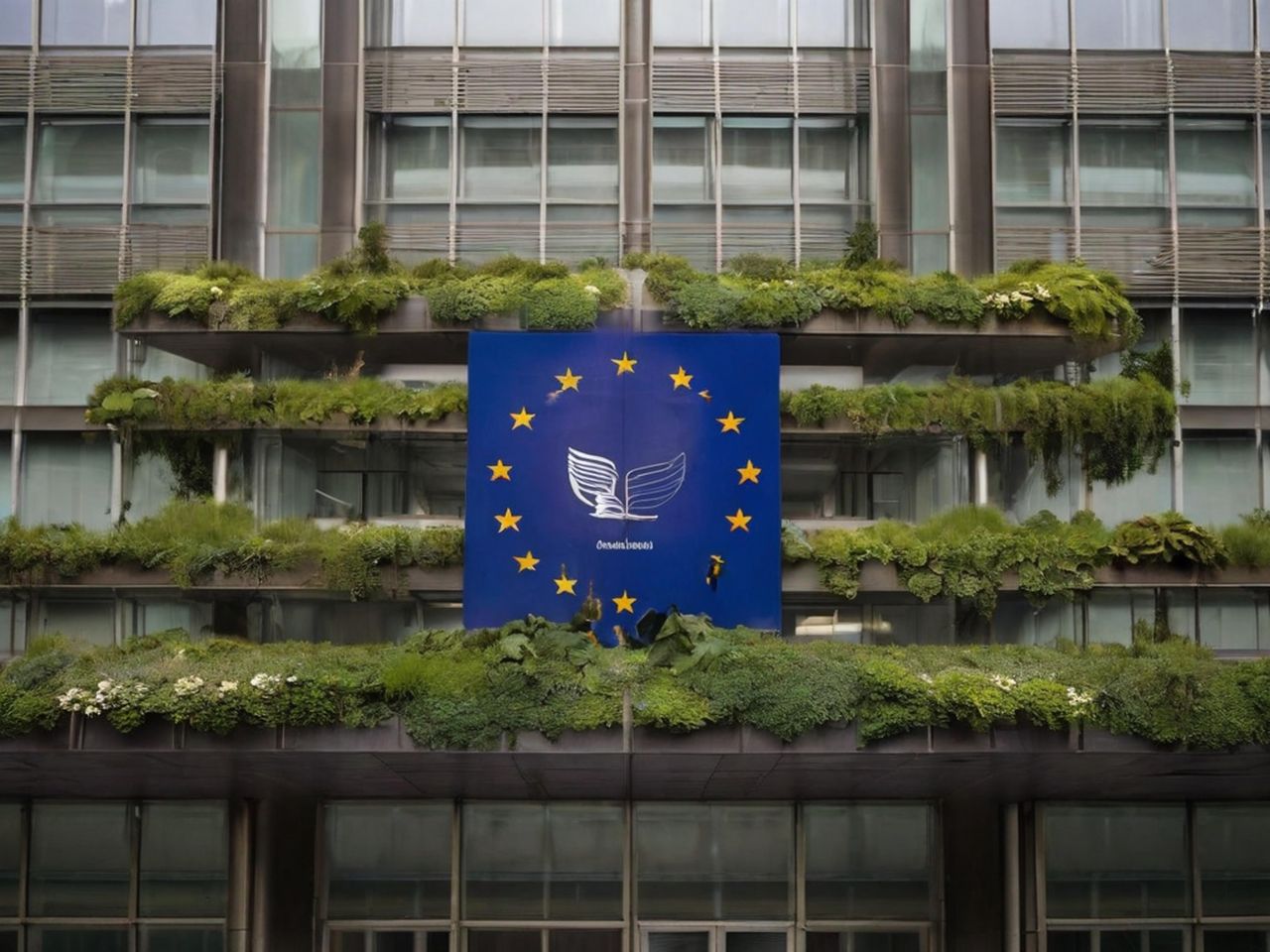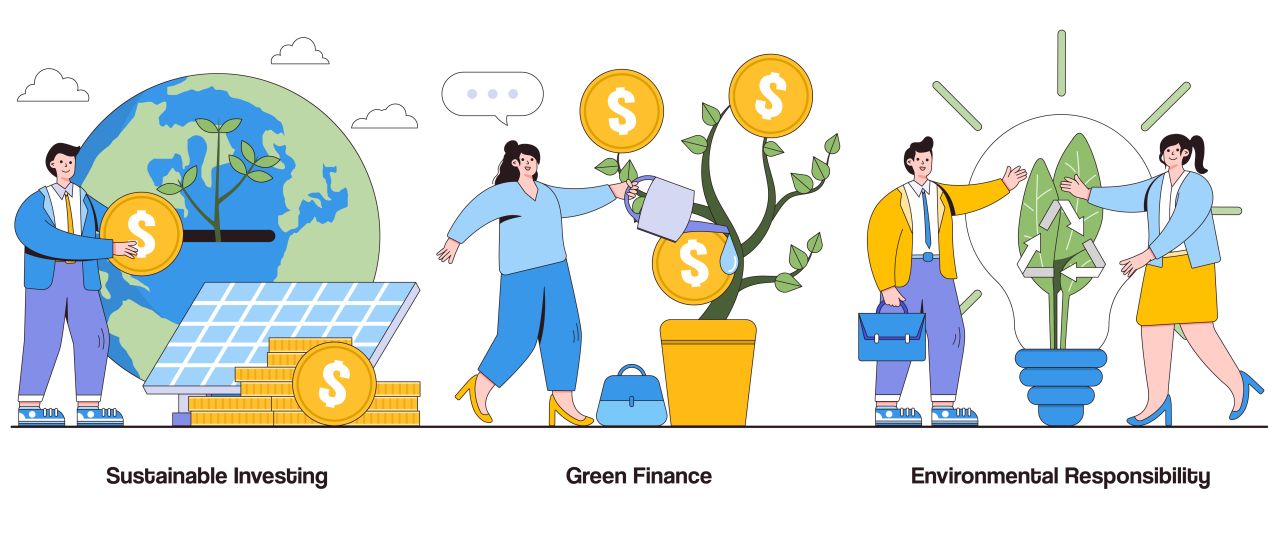Industry Classification Systems used in the Green Economy


Cut through the green tape
We don’t push agendas. At Net Zero Compare, we cut through the hype and fear to deliver the straightforward facts you need for making informed decisions on green products and services. Whether motivated by compliance, customer demands, or a real passion for the environment, you’re welcome here. We provide reliable information—why you seek it is not our concern.
Introduction to Classification Systems
A classification system is a method used to organize things into different categories based on common features or characteristics. In business and economics, industry classification systems are used to group companies into sectors and industries that perform similar activities. This helps governments, businesses, investors, and researchers track and analyze economic activities in an organized way.
For example, when a company is registered, it needs to select a code that defines what type of business it is. These codes are part of a classification system, and they help the government understand the kind of work a company does. Similarly, investors use classification systems to group companies into sectors like "technology" or "healthcare" for easier comparison.
What is a Green Industry Classification System?
In the green economy, specialized classification systems have emerged to categorize companies based on how environmentally sustainable their activities are. Unlike traditional systems that classify industries broadly (like manufacturing or healthcare), a green industry classification system focuses on companies that contribute to the green economy, such as those involved in renewable energy, waste management, or sustainable agriculture.
These systems help identify and group companies that are working to reduce their environmental impact, produce green products, or use resources more efficiently. This makes it easier for investors, regulators, and businesses to understand which companies are playing a key role in sustainability efforts.
Overview
FTSE Green Revenues Classification System (GRCS)
History
The FTSE Green Revenues Classification System (GRCS) was created to meet the growing need for a more detailed and accurate classification of companies based on their contributions to the green economy. It was developed to help investors and financial markets better identify businesses that generate revenue from environmentally sustainable products and services.
The system was introduced in 2013, building on earlier efforts like the FTSE Environmental Markets Index, launched in collaboration with Impax Asset Management in 2008. The original Environmental Markets Classification System focused on sectors like clean energy, energy efficiency, and waste management, with revenue thresholds determining inclusion. GRCS expanded this scope, offering greater granularity by covering more sectors and allowing for deeper analysis of companies involved in the green economy.

Developing Organization
FTSE Russell, a global provider of benchmarking, analytics, and data solutions (part of the London Stock Exchange Group), is responsible for the development and support of GRCS. The organization continues to maintain and update the system to reflect emerging trends in sustainability and evolving market needs. FTSE Russell also engages with advisory committees to ensure the system remains aligned with best practices and investor requirements.
Updates and Current Version
The GRCS is updated on a rolling annual basis. This means the system undergoes regular revisions each year to stay current. The committee ensures the classification system adheres to best practices and addresses market needs.
At the time of writing (October 2024) the latest version was the January 2024 edition.
Coverage and Scope
Main user: Investors
Primary purpose: Investment analysis
The GRCS provides data on a broad range of companies involved in the green economy. It includes data on approximately 3,000 companies, including those that are part of major indices like the FTSE Global Equity Index Series and the Russell 3000 Index. In total, the system covers over 16,000 stocks globally, making it one of the most comprehensive datasets for investors looking to track green revenue streams and assess the performance of environmentally focused companies.
Data Model Features
The data model features of the GRCS are highly detailed and structured to provide a comprehensive view of the green economy. The classification system spans 10 green sectors, broken down further into 64 subsectors and 133 micro-sectors. This granularity allows users to drill down into specific industries and activities that contribute to sustainability, from renewable energy generation to pollution control technologies. Furthermore, the system employs a tiered assessment of green impact, categorizing activities based on their environmental benefits. These tiers include "Limited," "Net positive," and "Clear and significant," providing a nuanced view of how different activities contribute to sustainability goals.
The GRCS also utilizes an estimation methodology to fill in data gaps where necessary. This method ensures that even when direct data on green revenues is unavailable, reliable estimates can still be provided, allowing for more accurate assessments of companies’ green revenue exposure. This makes the system particularly useful for investors and analysts who are tracking trends in the green economy and assessing investment opportunities.
Pricing
For information on availability, pricing, and subscription options, it's recommended to reach out to FTSE Russell's sales team or contact them via email at info@ftserussell.com, since they do not publically provide this information.
Carbon Disclosure Project Activity Classification System (CDP-ACS)
History
The CDP-ACS was developed to provide a more detailed and standardized way of classifying companies based on their environmental disclosures. It emerged as a response to the growing need for consistent and comparable data on corporate environmental impacts, particularly in the context of climate change. The system was introduced as part of its broader mission to encourage companies and cities to disclose environmental data and take action to reduce greenhouse gas emissions, safeguard water resources, and protect forests.
CDP-ACS was developed to support this mission by providing a structured framework for categorizing companies according to the specific environmental risks and opportunities they face. It enables stakeholders, including investors and regulators, to better assess how companies are addressing sustainability challenges. The system has evolved alongside the increasing focus on environmental, social, and governance (ESG) factors in global financial markets.
Developing Organization
The CDP (Carbon Disclosure Project), an international non-profit organization, is responsible for the development and support of the CDP-ACS. CDP is widely recognized for its environmental disclosure platform, which collects data from thousands of companies globally on climate change, water security, and deforestation. CDP collaborates with companies, investors, and governments to help drive transparency and action on critical environmental issues.
Updates and Current Version
The CDP-ACS is updated on an annual basis. The system is reviewed and revised each year to ensure it remains current and relevant.
At the time of writing (October 2024), the latest version was the edition labelled 2024, but it is unclear what month it came out in.
Coverage and Scope
Main user: Companies
Primary purpose: Reporting
The CDP-ACS covers a wide range of industries and economic activities, including 13 broad categories such as Apparel, Biotech & Pharma, Food & Agriculture, Manufacturing, and Transportation. It uses a three-tiered structure with Industry at the top level, followed by Activity Group, and then specific Activities. The system links these activities to environmental impacts such as climate change, water security, and deforestation, and is primarily used to facilitate environmental reporting by allocating sector-specific questions in CDP questionnaires. Companies must generate at least 20% of their revenue from an activity to be included, with multiple activity classifications allowed to reflect diverse revenue sources. The main goal is to categorize companies for environmental reporting and impact assessment, providing a better understanding of their risks, opportunities, and impacts, while ensuring comparability of environmental data across sectors.
Pricing
Companies report their environmental data to the CDP through an annual disclosure process, and the data is then categorized according to the CDP-ACS framework. Investors, financial institutions, and policymakers subscribe to CDP’s data services to obtain insights into corporate environmental performance.
Admin Fee
The CDP administrative fee is a cost that companies and organizations must pay in order to disclose environmental data through CDP’s platform. This fee helps support CDP’s global disclosure system and provides companies with access to various tools and insights for environmental reporting.
Some organizations may be exempt from the fee if they are only requested to disclose by Supply Chain members, Banks program members, or certain other CDP programs.
CDP has a three-tiered fee structure:
Enhanced Fee: Offers the most benefits, including enhanced access to data and communication opportunities.
Foundation Fee: Provides access to core reporting tools and some communication opportunities.
Essential Fee: Available only to companies headquartered in certain regions, targeting small to medium-sized enterprises (SMEs) or those with more limited budgets.
Organization headquarters | Enhanced fee | Foundation fee | Essential fee |
UK | £5,700 | £2,325 | n/a |
Europe (including Turkey) | €6,850 | €2,825 | n/a |
Japan | ¥740,000 | ¥310,000 | n/a |
China | CN¥51,500 | CN¥20,500 | CN¥8,250 |
Brazil | R$13,750 | R$9,550 | R$6,375 |
Latin America (excluding Brazil) | US$2,450 | US$1,750 | US$1,115 |
India | ₹5,70,000 | ₹2,27,500 | ₹91,000 |
North America | US$7,300 | US$3,100 | n/a |
Southeast Asia, South Korea, Australia or New Zealand | US$7,300 | US$3,100 | n/a |
Hong Kong, China and Taiwan, China | US$7,300 | US$3,100 | n/a |
Other countries | US$7,300 | US$3,100 | US$ 1,115 |
Source: cdp.net
Disclosure Process
Companies register for a CDP account to access the disclosure system.
CDP uses its Activity Classification System (ACS) to determine which questionnaire sectors apply to a company based on its revenue-generating activities.
The ACS allocates sector-specific questions to ensure companies receive relevant questionnaires.
Companies then complete and submit their responses during the annual disclosure cycle, typically running from June to September.
While the ACS is a key part of CDP's disclosure process, it appears to be an internal classification system used by CDP rather than a separate subscription product. Companies engaging with CDP would interact with the ACS as part of their overall disclosure process, rather than subscribing to it separately.
For detailed information on fees and the disclosure process, it's best to contact CDP directly.
Sustainability Accounting Standards Board Sustainable Industry Classification System (ASB SICS)
History
SICS was introduced as part of the Sustainability Accounting Standards Board’s (SASB) mission to develop sustainability accounting standards that provide decision-useful information to investors. It was created to address the growing need for detailed and industry-specific sustainability data, as traditional industry classification systems were not equipped to capture sustainability risks and opportunities. SICS was developed with input from industry experts, investors, and other stakeholders to ensure it is aligned with the real-world financial impacts of sustainability issues.
Developing Organization
SASB, which is now part of the International Financial Reporting Standards (IFRS) Foundation, is responsible for the development, maintenance, and support of SICS. SASB’s overarching goal is to establish globally accepted sustainability standards that improve transparency and help businesses and investors focus on material sustainability issues.
Updates and Current Version
SASB SICS does not have a regular, predetermined update schedule. Updates to the system are made on an as-needed basis rather than at fixed intervals.
The most recent significant update to SICS was in 2018 when SASB released its 77 industry-specific standards. Since then, SASB (now part of the IFRS Foundation and overseen by the International Sustainability Standards Board or ISSB) has not announced any major revisions to the SICS structure.
The ISSB, which now oversees SASB standards and SICS, announced in 2023 that they will:
• Continue to use SICS for industry-based materials, including SASB Standards, for at least the next two years.
• Consider enhancements to the industry groupings in SICS during this period.
While the core structure of SICS has remained largely unchanged since 2018, it's important to note that the ISSB is actively considering potential updates or enhancements to the system. However, as of October 2024, no major revisions have been implemented since the 2018 release.
Coverage and Scope
Main user: Investors
Primary purpose: Reporting
SICS is widely used by investors, financial market participants, and asset managers, as well as companies looking to identify relevant sustainability disclosure standards. It helps group companies by sharing sustainability risks, supports the development of industry-specific sustainability standards, and assists in analyzing risks and opportunities for sustainable investment.
By enabling companies to report on their sustainability profiles and informing the creation of sustainability-focused financial products, SICS plays a crucial role in ESG reporting and investment strategies. It also provides essential guidance for setting industry-specific sustainability metrics, ensuring that both companies and investors can assess and respond to sustainability challenges effectively.
Data Model Features
SICS is organized into 77 industries spread across 11 sectors, each of which has unique sustainability factors that can impact financial performance. The sectors include:
Technology & Communications
Health Care
Financials
Consumer Goods
Renewable Resources & Alternative Energy
Transportation
Services
Resource Transformation
Extractives & Minerals Processing
Infrastructure
Food & Beverage
Each sector is further broken down into industries based on the nature of their business activities, enabling precise categorization of companies according to their sustainability-related risks and opportunities. For example, within the Extractives & Minerals Processing sector, you will find industries like oil and gas exploration, mining, and metals processing, each of which has different sustainability challenges.
SICS focuses on sustainability risks rather than traditional financial characteristics, grouping companies based on shared sustainability challenges. Companies are categorized primarily under one SICS industry, even if they have multiple revenue streams, with the emphasis on sustainability risks and opportunities over economic cycles. This classification system helps investors and companies identify and disclose financial material sustainability information, providing a consistent framework for assessing sustainability impacts across different industries.
Materiality Finder

The Materiality Finder tool helps users identify the most relevant sustainability topics for specific industries, particularly those that are likely to have a material financial impact on companies within those industries. It allows users to explore sustainability topics across 77 industries, making it easier to identify which issues are financially material for specific sectors.
The tool enables side-by-side comparisons of different industries, helping companies or investors understand which environmental, social, or governance (ESG) factors are most significant for each.
Pricing
The SICS classification is publicly available and can be accessed for free through SASB’s website. It is designed to be used by companies, investors, and other stakeholders to align sustainability reporting with the issues that matter most to specific industries. While accessing the classification is free, using SASB's detailed reporting tools and standards requires a license or subscription to their services.
For more information, you can make a classification request through their official website.
EU Taxonomy for Sustainable Activities
History
The EU Taxonomy for Sustainable Activities was established as part of the European Union's commitment to combat climate change and promote sustainable finance. It emerged from the 2015 Paris Agreement and the 2019 European Green Deal, which aimed to make Europe climate-neutral by 2050. In March 2018, the European Commission published an Action Plan on Financing Sustainable Growth, which included the creation of a classification system for sustainable activities.
The Taxonomy Regulation (EU) 2020/852 was officially published on June 22, 2020, following recommendations from a Technical Expert Group. The primary goals of the EU Taxonomy are to prevent greenwashing, help investors make informed decisions, scale up sustainable investments, and ensure market transparency. It serves as a key tool in directing investments towards activities that support the transition to a sustainable economy.
Updates and Current Version
The EU Taxonomy is updated on a rolling basis:
The Taxonomy Regulation requires the system to be reviewed and updated every three years.
Amendments and new criteria are added periodically as needed.
The most up-to-date information on the EU Taxonomy as of October 2024 includes:
The Taxonomy Regulation entered into force on July 12, 2020.
In June 2023, the Commission adopted new criteria for the four remaining environmental objectives beyond climate change mitigation and adaptation.
While the core framework was established in 2020, the EU Taxonomy continues to evolve with new criteria, amendments, and interpretative guidance being added regularly. The system is actively maintained and updated to reflect the latest developments in sustainable finance and environmental standards.
Coverage and Scope
Main user: Financial market participants
Primary purpose: Regulatory requirements
The EU Taxonomy for Sustainable Activities is a classification system that defines environmentally sustainable economic activities within the European Union, designed to guide investors, companies, and policymakers in aligning with sustainability goals. Covering a wide range of industries, the taxonomy focuses on six environmental objectives: climate change mitigation and adaptation, sustainable use of water and marine resources, transition to a circular economy, pollution prevention, and protection of biodiversity. To be classified as sustainable, an activity must meet specific technical criteria and avoid causing significant harm to other objectives. The taxonomy serves as a regulatory framework, applying to both financial and non-financial companies, particularly in sectors with high environmental impact such as energy, manufacturing, transportation, and agriculture. Its broad scope extends to companies across the EU and global investors, playing a crucial role in steering capital towards sustainable practices and supporting the EU's climate targets and the European Green Deal.
Data Model Features
The EU Taxonomy for Sustainable Activities data model is structured to classify economic activities based on their contribution to environmental sustainability. It operates on a four-level structure:
Level 1: The six environmental objectives—climate change mitigation, climate change adaptation, sustainable water use, transition to a circular economy, pollution prevention, and biodiversity protection.
Level 2: NACE macro-sectors, which categorize broad economic sectors aligned with the EU’s Nomenclature of Economic Activities (NACE).
Level 3: Economic activities within each macro-sector, where specific activities are identified for assessment.
Level 4: Technical screening criteria for each activity, which set detailed thresholds and metrics to determine whether an activity substantially contributes to at least one of the six environmental objectives.
For an activity to be classified as "green," it must meet the technical screening criteria, ensure it does no significant harm (DNSH) to any of the other environmental objectives, and comply with minimum social safeguards. The classification system provides a clear and measurable framework, evaluating both the positive impact of an activity and its potential to harm other objectives.
Additionally, the EU Taxonomy offers a common language for sustainable economic activities across the EU, aiding investors, companies, and policymakers in making environmentally sustainable investment decisions. This unified approach supports the EU’s broader climate and energy targets and its commitments to the Paris Agreement. The taxonomy is also designed to be flexible, allowing for the addition of new activities and criteria over time as sustainability standards evolve.

Pricing
The EU Taxonomy for Sustainable Activities is a regulatory framework available for free as part of EU regulations and guidelines. While there are no direct costs associated with accessing the taxonomy itself, organizations may incur expenses related to compliance and implementation, such as analyzing activities against taxonomy criteria, collecting and verifying relevant data, updating reporting processes, and training staff. These costs can vary significantly depending on the size and nature of the organization and its existing sustainability reporting practices.
You can access the EU Taxonomy for Sustainable Activities here.
Central Pollution Control Board (CPCB)
History
The Central Pollution Control Board (CPCB) was established in September 1974 under the Water (Prevention and Control of Pollution) Act to combat growing water pollution issues in India. Initially called the Central Board for the Prevention and Control of Water Pollution, it focused on promoting the cleanliness of streams and wells. In 1981, its role expanded with the enactment of the Air (Prevention and Control of Pollution) Act, giving it authority to address air pollution as well. By 1988, it was renamed the Central Pollution Control Board, reflecting its broader responsibilities.
As the national apex body for pollution control, CPCB operates under the Environment (Protection) Act of 1986, providing technical services to the Ministry of Environment and Forests. It sets pollution standards, monitors environmental quality, conducts research, and coordinates pollution control activities across Indian states. CPCB’s creation was a significant milestone in India's efforts to address water and air pollution and establish a unified framework for environmental protection.
Developing Organization
The Central Pollution Control Board (CPCB) is responsible for its own updates and development, operating under the Ministry of Environment, Forest and Climate Change (MoEFCC) of the Government of India. The CPCB regularly reviews and updates its policies, guidelines, and standards related to pollution control. It also conducts research and development activities to enhance its capabilities in monitoring environmental quality, implementing pollution control measures, and ensuring compliance with environmental regulations. Additionally, the CPCB collaborates with various stakeholders, including state pollution control boards, industries, and research institutions, to develop effective strategies for pollution management and environmental protection.
Updates and Current Version
The CPCB classification system does not have a fixed update schedule. Instead, it is updated on an as-needed basis to accommodate new industries and refine existing categories.
While the core structure of the Red, Orange, Green, and White categories remains, the CPCB continues to refine and expand the system to cover new and emerging industrial sectors. As of October 2024, the August 2023 update represents the most current version of the classification system.
Coverage and Scope
Main user: Government of India
Primary purpose: Regulatory enforcement
Its scope includes setting national standards for pollution emissions and environmental quality, monitoring compliance, and overseeing pollution levels nationwide. CPCB regulates various industries, monitors water bodies and air quality, and coordinates with state pollution control boards to ensure enforcement of pollution control measures.
The board’s authority allows it to conduct investigations, research, and inspections, ensuring compliance with environmental laws across all Indian states. CPCB also develops pollution control technologies, leads public awareness efforts, and facilitates the implementation of pollution control activities at the national level.
Data Model Features
The CPCB's data model classifies industries and activities based on their pollution potential into four categories: Red, Orange, Green, and White, with 61, 90, 65, and 38 sectors respectively. This classification is determined by a Pollution Index (PI), which evaluates factors such as water pollution, air pollution, hazardous waste generation, fuel consumption, and the amount of wastewater generated. Industries are assigned to categories based on specific PI score ranges: Red (PI ≥ 60), Orange (PI 41-59), Green (PI 21-40), and White (PI < 20).
The system is flexible, allowing for new sectors to be added or existing sectors to be reclassified as their environmental performance improves. The State Pollution Control Boards (SPCBs) and Pollution Control Committees (PCCs) can also categorize new or unlisted sectors using the CPCB's methodology. Covering both industrial and non-industrial operations, the model supports effective environmental enforcement and management through a comprehensive categorization of activities based on their environmental impact.

Pricing
The Central Pollution Control Board (CPCB) does not have a specific pricing structure, as it is a statutory organization under the Government of India focused on environmental protection rather than a commercial entity. While the CPCB itself does not charge fees for its services, industries and businesses may incur costs related to compliance with CPCB regulations. These costs can include expenses for implementing pollution control measures, obtaining necessary permits from the CPCB or state pollution control boards, and potential fines for non-compliance. Additionally, companies may need to invest in monitoring equipment and staff training to meet the environmental standards set by the CPCB. Overall, the financial implications for businesses arise from their need to adhere to regulatory requirements rather than direct charges from the CPCB itself.
You can access the CPCB classification system here.
Taxonomía Verde de Colombia (TVC)
History
The Taxonomía Verde de Colombia (Green Taxonomy of Colombia) was launched in 2022 as a classification system for identifying economic activities and assets that contribute to Colombia's environmental objectives. It was created to help develop green capital markets, promote the effective mobilization of public and private resources for sustainable investments, and avoid greenwashing. As the first country in Latin America to publish such a taxonomy, Colombia built on the experiences of the EU’s Green Taxonomy while aligning with international standards.
While based on international frameworks, there are important differences in Colombia’s taxonomy, particularly in the areas of land use and management, nuclear energy, and natural gas industries, reflecting Colombia’s unique environmental and economic context. The taxonomy supports Colombia’s broader environmental commitments, including climate change mitigation and adaptation, biodiversity conservation, sustainable land management, pollution prevention, water protection, and the transition to a circular economy. Its primary purpose is to define what qualifies as a green activity in Colombia, providing consistency for stakeholders and guiding investment flows toward sustainable projects.
Developing Organization
The Taxonomía Verde de Colombia is developed and overseen by the Superintendencia Financiera de Colombia (SFC), in collaboration with the Ministry of Environment and Sustainable Development, as well as various stakeholders, including financial institutions and environmental experts. The SFC is responsible for defining the criteria for sustainable economic activities, setting technical guidelines for reporting, and ensuring alignment with Colombia’s environmental policies and international standards.
The SFC provides guidance and support to businesses and investors on how to align their projects with the taxonomy and engages with various stakeholders, including the private sector, to ensure the taxonomy meets market needs while supporting environmental goals. The organization also oversees monitoring and evaluation, assessing the effectiveness of the taxonomy in promoting sustainable investments, while working to prevent greenwashing and promote transparency.
Updates and Current Version
There is no fixed update schedule mentioned for Taxonomía Verde de Colombia. Instead, it appears to be updated on an as-needed basis to expand its scope and improve usability.
The most recent updates to Taxonomía Verde de Colombia include:
• The initial launch was in April 2022, establishing the first version of the taxonomy.
• In March 2023, a comprehensive implementation guide for green credit management was published.
The taxonomy is described as a "lively document" that is continually evolving. While there isn't a formal versioning system mentioned, the government has plans for future updates:
• For 2024-2025, they plan to develop TVC V2.0, which will expand to include Adaptation & Biodiversity objectives.
• There are also plans for TVC V3.0, which will involve prioritization of objectives.
These planned versions suggest that the current version could be considered V1.0, with the February 2024 guidelines being the most recent update to this version.
Coverage and Scope
Main user: Financial institutions
Primary purpose: Sustainable finance
The Taxonomía Verde de Colombia primarily serves financial institutions, guiding them in identifying and supporting economic activities that contribute to Colombia’s environmental objectives. Its scope includes sectors such as energy, agriculture, water, forestry, and waste management, focusing on activities related to climate change mitigation and adaptation, sustainable land use, biodiversity conservation, pollution prevention, and the transition to a circular economy.
The primary purpose of TVC is to facilitate sustainable finance, ensuring that investments are directed towards projects that align with Colombia’s environmental goals. It provides clear criteria for what qualifies as a green activity and ensures transparency in financial markets. The taxonomy applies to both public and private investments and is designed to evolve over time, incorporating new activities and standards as sustainability practices progress.
You can access the TVC classification system here.
Data Model Features
It spans 10 key sectors such as energy, construction, waste management, water, transport, ICT, manufacturing, livestock, agriculture, and forestry, which are further broken down into 50 specific activities, each with detailed eligibility criteria and thresholds.
The TVC is organized into four levels:
7 environmental objectives
10 economic sectors
50 activities
Specific criteria for each activity
The taxonomy aligns with the International Standard Industrial Classification (ISIC) and integrates national laws, regulations, and environmental certification standards. It provides clear guidance for investors by defining what qualifies as a sustainable activity and supports green finance, helping to mobilize investments toward environmentally beneficial projects.
Developed with input from government, financial institutions, and environmental experts, the TVC is a dynamic tool that promotes transparency, avoids greenwashing, and supports Colombia’s environmental goals, including commitments to the Paris Agreement.

Pricing
The Taxonomía Verde de Colombia (TVC) is a free-to-access classification system developed by the Colombian government to guide sustainable investments. While there is no direct cost for using the taxonomy, companies may face indirect expenses such as compliance costs to meet its criteria, reporting and documentation expenses, and investments in training staff. Some organizations may also require consultancy services or updates to technology and systems to manage taxonomy-related data. Optional certification or verification may add further costs. Despite these expenses, the TVC aims to facilitate access to green financing and sustainable investment opportunities, providing long-term benefits by aligning with national and international environmental objectives.
A comparative analysis
System | Founding year | Organization | Key Features | Availability |
GRCS | 2013 | FTSE Russell | Classifies companies by green revenue across 10 sectors, 64 subsectors, and 133 micro-sectors, with impact tiers (Limited, Net positive, Clear). | Requires a license or subscription for detailed data |
GDP-ACS | 2018 | CDP (Carbon Disclosure Project) | Categorizes companies by environmental impacts like climate change, water security, and deforestation; used in CDP disclosures. | Requires a subscription; some data is freely accessible |
SASB SICS | 2018 | SASB (under IFRS Foundation) | Classifies 77 industries in 11 sectors based on sustainability risks and opportunities; links sustainability issues to financial performance. | Freely accessible for non-commercial use; commercial use requires a license |
EU Taxonomy For Sustainable Activities | 2020 | European Commission | Defines criteria for sustainable economic activities; Six environmental objectives such as climate change mitigation, pollution control, and biodiversity protection. | Freely available for public use; specific data may require interaction with EU regulators |
CPCB | 1974 | Indian Government | Regulates pollution control measures and monitors environmental data in India; Categorises by using 4 colours (Red, Orange, Green, White); Focuses on air, water, noise, and hazardous waste. | Freely available data and reports for public use. |
TVC | 2017 | Ministry of Environment and Sustainable Development of Colombia | Classifies sectors and activities by their contribution to sustainable development and environmental protection in Colombia; aligned with global green finance standards. | Freely accessible for public use; used by regulators, investors, and companies in Colombia. |
This article was published in cooperation Classification.Codes, a knowledge hub for industry classification systems, including classification systems used in Green Economy & sustainability sector.

More related content

Carbon Accounting vs. Climate Risk Management - What's the Difference

Hard Facts on Renewable Energy: Breaking Down the Real Economic Ben...

Sustainability That Saves: How Energy Efficiency is Cutting Costs f...
